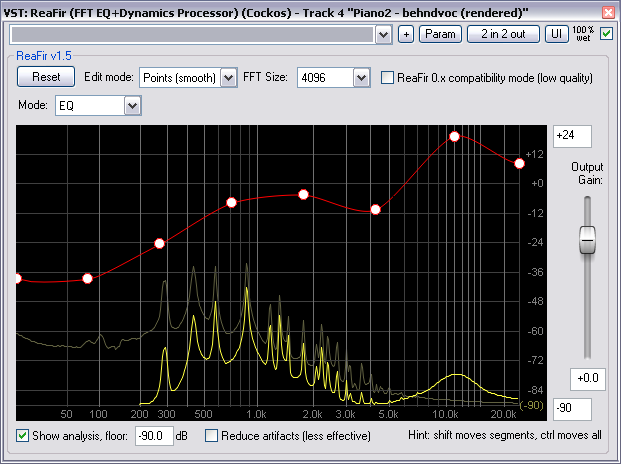

Additionally, overall gain, or level, often fluctuates with regular EQ due to this phase shifting. By shifting phases, however, the sound can become « smeared » due to a slight delay of frequency ranges. Of course, EQing doesn’t mute the sound altogether, just certain frequencies of that sound. What is linear phase EQ, then, and why use it? Each peak is met with a valley, resulting in almost no sound at all. For instance, when two identical sine waves are separated by 180 degrees, they cancel each other out (known as destructive interference). This happens because certain frequencies are being reduced, enhanced, or muted entirely depending on where these waves are colliding. Regular EQ works by shifting this initial wave a certain amount, then combining this duplicated shifted wave with the original. A good way to understand phase shifting is to imagine a simple sine wave.

The digital EQ of today simply mimics this physical alteration. In the old days of analog EQing, this shifting was an electrical response involving capacitors and inductors. When these frequencies are manipulated, something called « phase shifting » occurs. Regular EQ is the tool that alters the frequencies present in any given track. It helps, however, to first draw a distinction between « regular » EQ and linear phase EQ. regular EQĭescribing linear phase EQ without getting too technical is somewhat difficult. And when it comes to mastering, there’s a special kind of EQ that can really come in handy: linear phase EQ. Still, it’s necessary to use EQ in both the mixing and mastering processes. If you’re not prudent with your EQing, you can go beyond the point of no return and wind up in a perilous position. Even the smallest changes in frequencies can drastically alter the character of a track or entire song.

H ( ω ) = A ( ω ) e − j ω τ, īecause of this constant, the phase of the system is not a strictly linear function of frequency, but it retains many of the useful properties of linear phase systems.Equalization, or EQ, is undoubtedly one of the most difficult aspects of mixing and mastering to get the hang of. For a continuous-time application, the frequency response of the filter is the Fourier transform of the filter's impulse response, and a linear phase version has the form: A filter is called a linear phase filter if the phase component of the frequency response is a linear function of frequency.


 0 kommentar(er)
0 kommentar(er)
